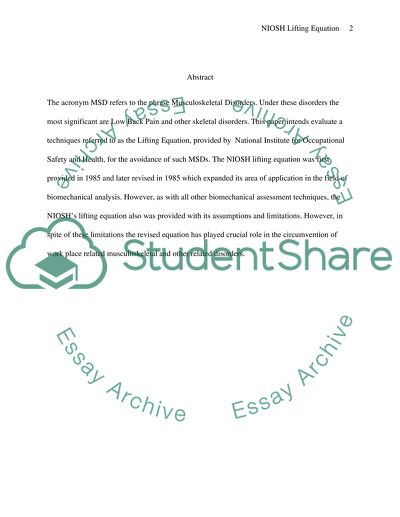Cite this document
(“NIOSH Lifting Equation Essay Example | Topics and Well Written Essays - 2250 words”, n.d.)
NIOSH Lifting Equation Essay Example | Topics and Well Written Essays - 2250 words. Retrieved from https://studentshare.org/health-sciences-medicine/1531700-niosh-lifting-equation
NIOSH Lifting Equation Essay Example | Topics and Well Written Essays - 2250 words. Retrieved from https://studentshare.org/health-sciences-medicine/1531700-niosh-lifting-equation
(NIOSH Lifting Equation Essay Example | Topics and Well Written Essays - 2250 Words)
NIOSH Lifting Equation Essay Example | Topics and Well Written Essays - 2250 Words. https://studentshare.org/health-sciences-medicine/1531700-niosh-lifting-equation.
NIOSH Lifting Equation Essay Example | Topics and Well Written Essays - 2250 Words. https://studentshare.org/health-sciences-medicine/1531700-niosh-lifting-equation.
“NIOSH Lifting Equation Essay Example | Topics and Well Written Essays - 2250 Words”, n.d. https://studentshare.org/health-sciences-medicine/1531700-niosh-lifting-equation.


